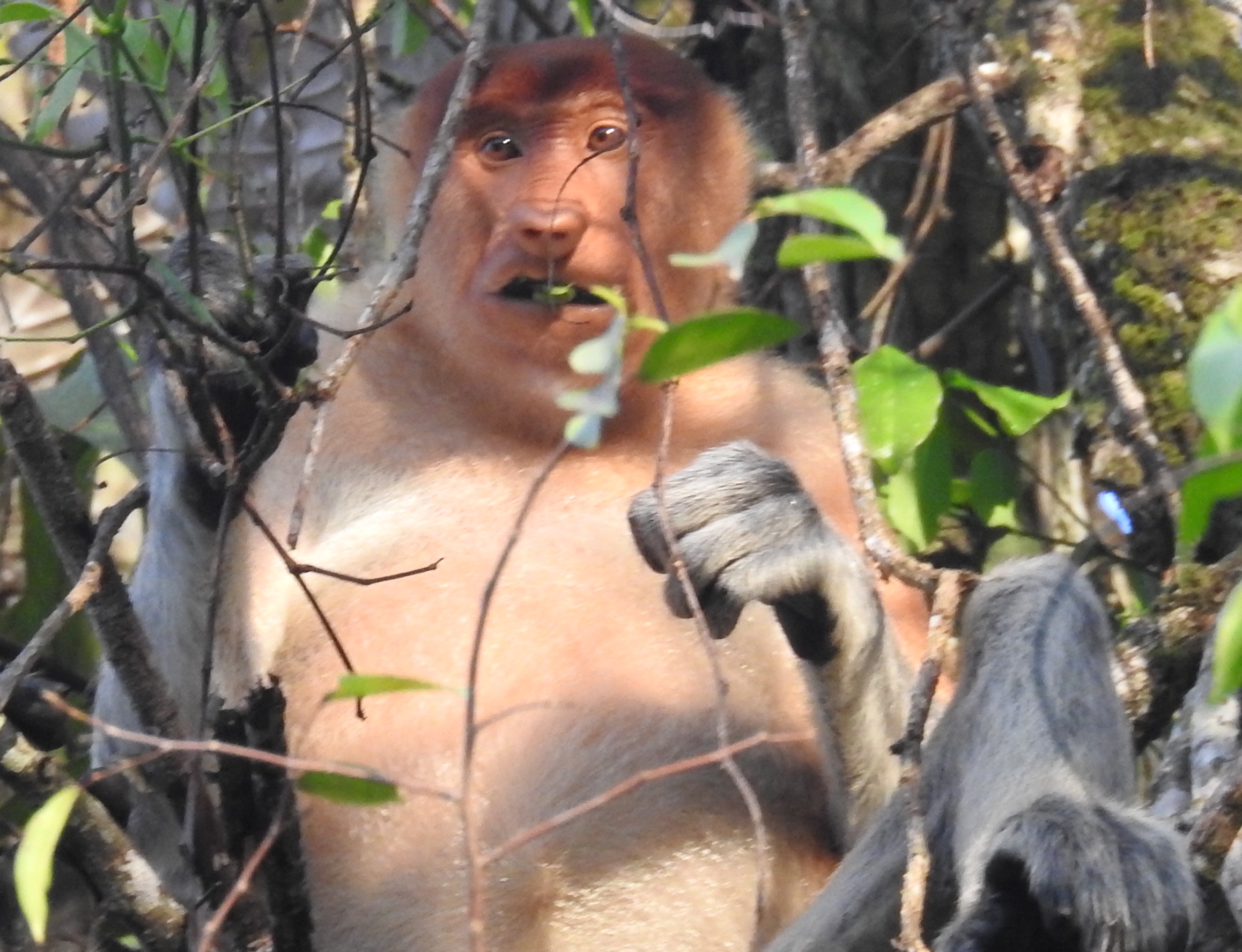Ronda Green (chair WTA)
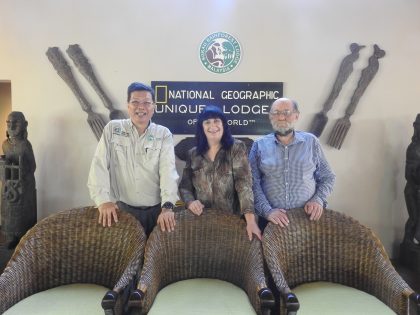
Albert, Ronda and Denis in Sukau Rainforest Lodge
Okay, so this is not an Australian wildlife tourism experience, but Australia is so close to Southeast Asia, we both have marvellous diversity of wildlife, and our wildlife is so very different. There is plenty of scope for more visits between the two.
And Sukau Rainforest Lodge, founded and owned by Albert Teo (who was one of our keynote conference speakers in 2016) of Borneo Eco Tours, is named by National Geographic as one of the Unique Lodges of the World, and has won many others awards, so I’ve been keen to visit for quite a while. They have excellent policies on forest protection,minimal wildlife disturbance, waste recycling, buying local products, employing local people, quality guiding and educating their staff, local residents, politicians and guests about the wildlife.
Quoting from Carol Patterson in her introduction to the book “Saving Paradise: The Story of Sukau Rainforest Lodge”:
“The lodge was the brainchild of Albert Teo … he undertook to build a lodge that would provide great wildlife watching experiences and become a base of operations for the Kinabatangan area while also demonstrating sustainable building and operating principles. His vision also included a meaningful role for the people living in the Sukau area.”
Denis (my husband) and I wanted something really special this year for two milestone birthdays, and when I saw that Malaysian Airlines were offering a very special deal I thought at once of Borneo Ecotours and the very special Sukau Rainforest Lodge I’d heard so much about. I had been very impressed by presentations by Albert Teo at Global Eco conferences,and subsequently invited him as a keystone speaker at our Wildlife Tourism conference in Adelaide in 2016. When he heard we were coming he asked if I could give some training to his guides plus a few copies of my book “Wildlife Tourism: a handbook for guides,ecolodges, students and business startups,” in exchange for my part of the accommodation and touring, an offer which I immediately agreed to. I was very pleased to learn he had been using my book for guide training over the past couple of years (I have also recently heard it has been used for guide training in Sri Lanka for several years).
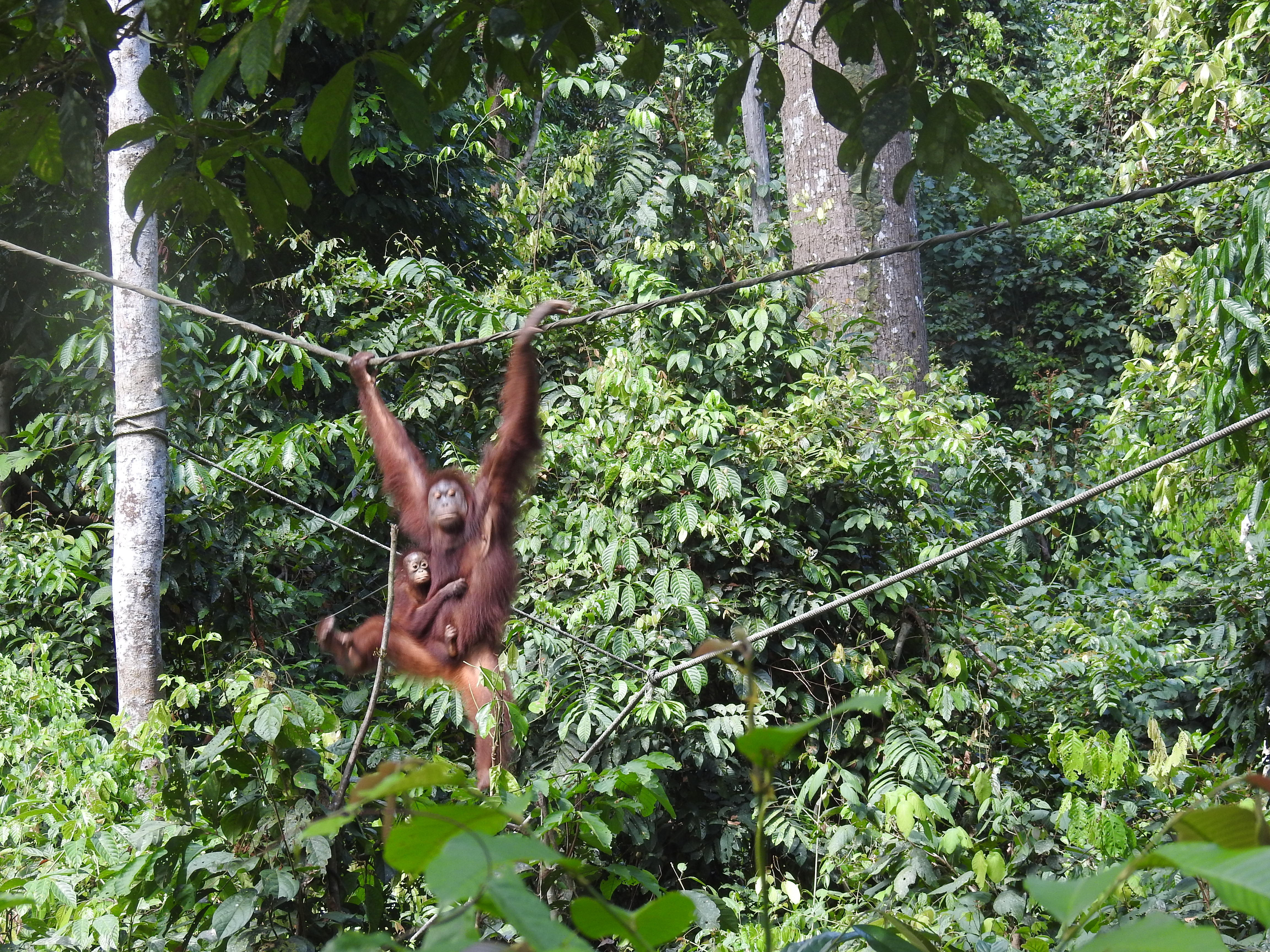
En route to Borneo
Flying in and out of Kuala Lumpur without seeing any of it seemed a pity, especially as Denis had never been to Malaysia (I had trekked around peninsular Malaysia and climbed Mt Kinabalu in Sabah many years ago, before we met), so we allowed ourselves a day and a night there along the way. I didn’t recognise anything from my visit of half a century ago.
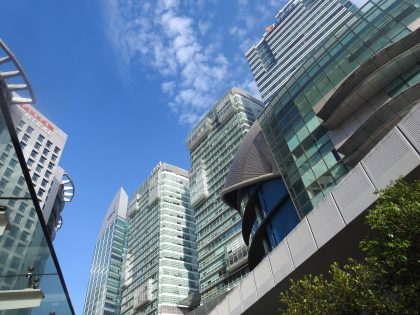
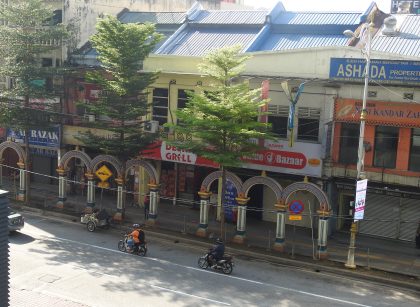
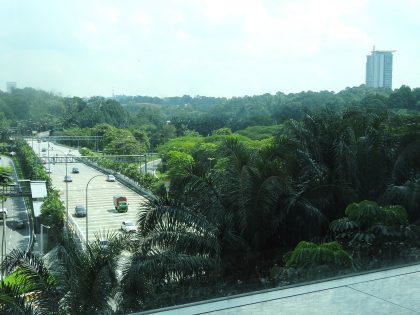
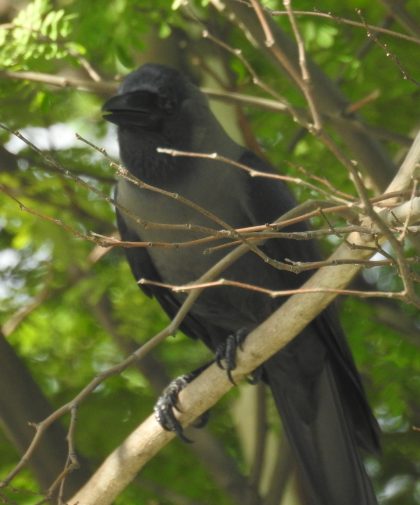
A pleasant day of wandering, some delicious Malaysian meals and drinks (I was introduced to carrot milkshake and surprised I found myself wanting more), And my forest bit of Malaysian birdwatching (a house crow), and then were on our way to Sandakan in Sabah (northeast Borneo)
I was wondering how best to choose a taxi to take us to the hotel when a young lady called me and showed me the sign she held with my name on it. She introduced herself as Joy and led us to a Borneo Eco Tours bus, Great service – I wasn’t expecting to meet anyone from the company until the following day, and we were grateful for the lift and to hear a bit more about the tour along the way.. She expressed some frustration that she wouldn’t be at the lodge on the day of my guide training, so I promised to send her a pdf of my book, which I later did.
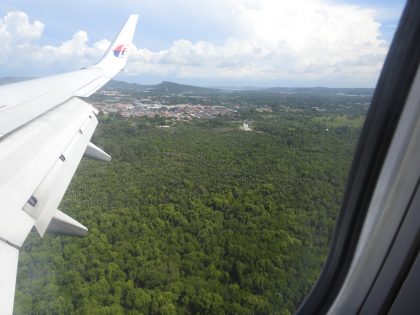 I
I
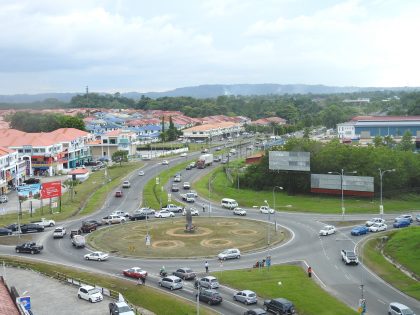
Orangutans and Sun Bears in Sandakan
We were excited about our first destination – the Sepilok Orangutan Rehabilitation Centre – and weren’t disappointed.
Orang-utans have had a hard time over the past few decades, with poaching for the illegal pet market (usually the mother is killed so the baby can be stolen), logging (both legal and illegal) and more recently the extensive palm oil plantations displacing so much of their habitat. This centre raises orphaned orang-utans and rehabilitates them back into the surrounding forests or occasionally further afield.
It wasn’t long before we saw our first semi-wild orangutan (raised as an orphan in the Centre,now released into the wild but returning for a snack from time to time) in the trees above, a little too obscured by foliage for good photos, plus a tiny squirrel hardly bigger than a mouse.
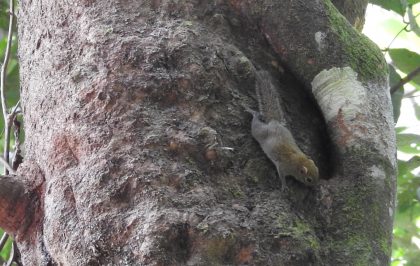
Soon we reached a feeding platform where staff were placing some bananas, melons and other fruit. The released orang-utans spend most of their time foraging naturally in the forest but know they can get an extra treat by checking out these platforms.
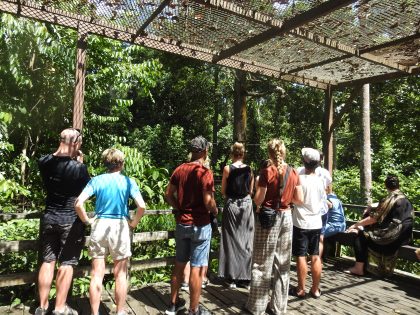
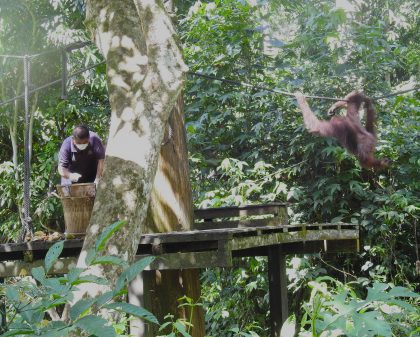
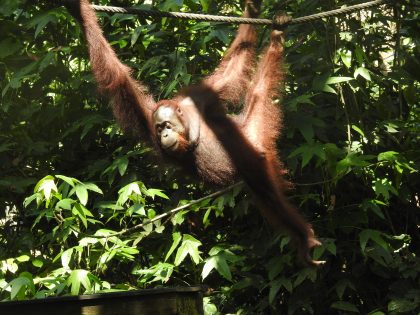
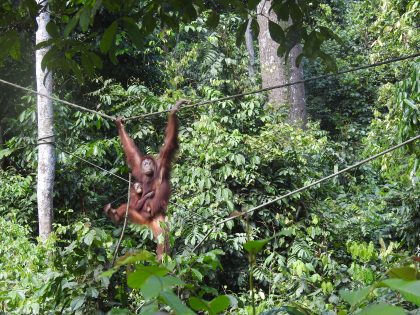
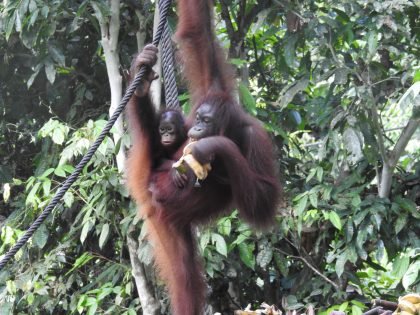
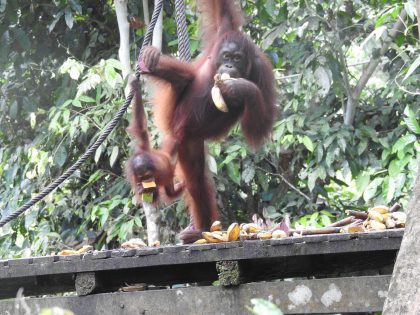
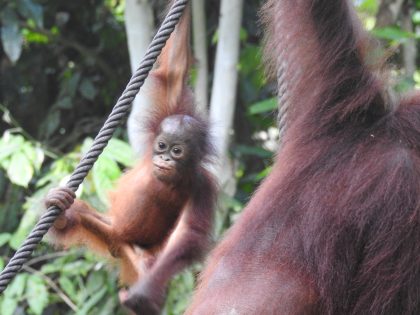
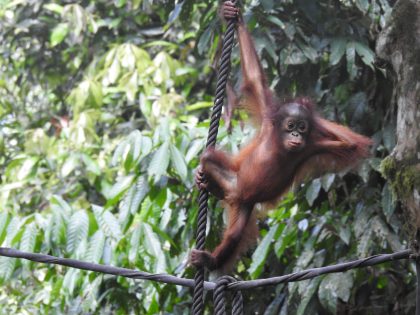
We also saw black squirrels, pig-tailed macaques, long-tailed macaques and several birds
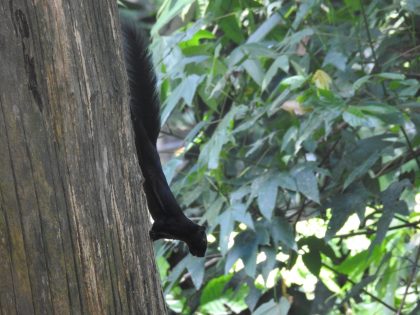
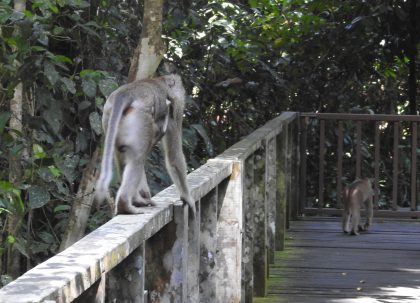
Then it was another short walk through the forest to the orangutan nursery, where youngsters who were denied normal learning opportunities in the places they were rescued from now learn to climb, play and do other things young apes should be able to do. (There is a similar set-up in Jane Goodall’s Chimpanzee Eden,which my son and I visited some years ago.)


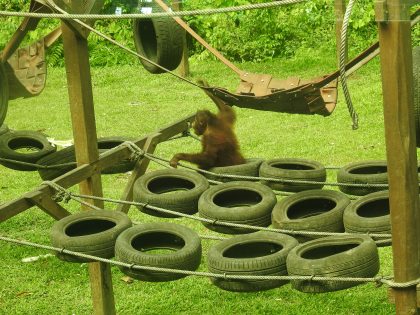
After a hearty lunch we visited the Bornean Sun Bear Conservation Centre. These, the smallest bears in the world, are rare already and increasingly at risk from poaching and habitat destruction
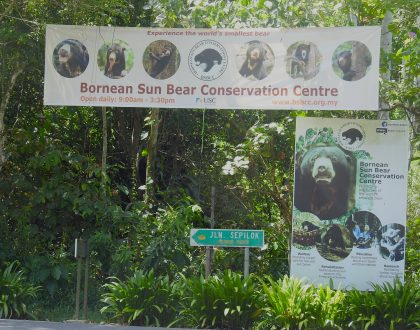

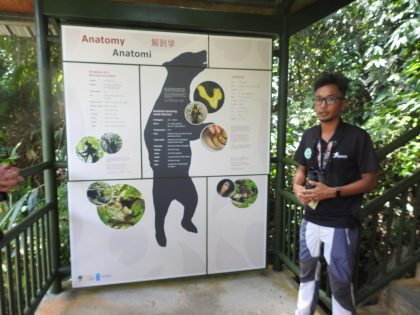
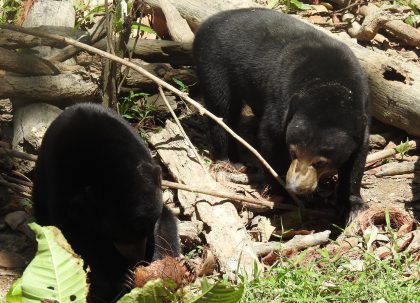
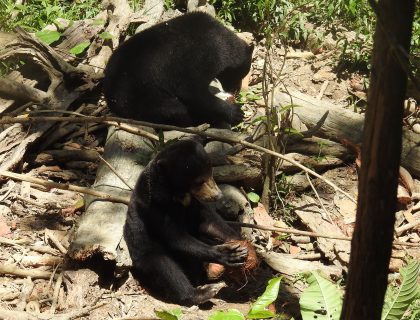
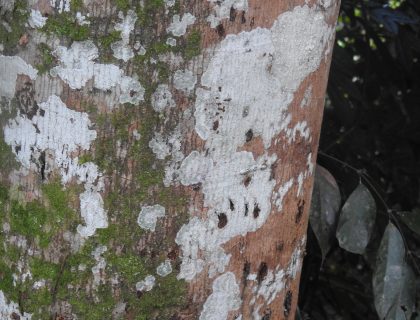
Our guide Rahmen, who was to be our main (and excellent!) guide for the next few days, told us he’d never managed to see bears in the wild as they were so rare and secretive, but had seen their scratches on there trees, and showed us what these looked like.
Along the Kinabatangan River
A two and a half hour boat journey took us fromSandakan to Sukau Rainforest Lodge.
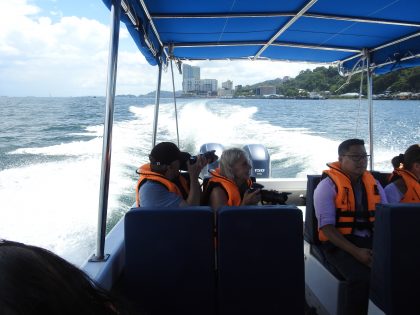
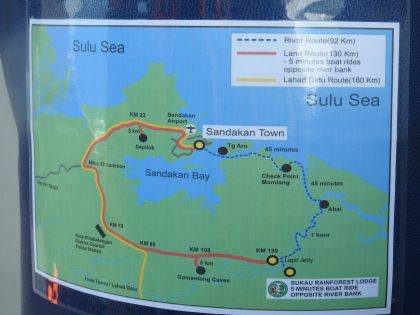
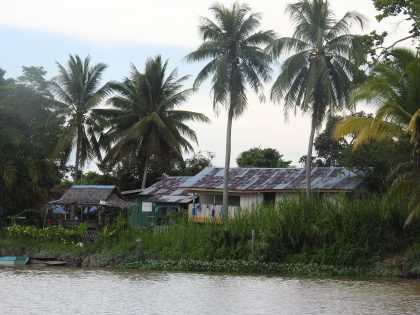
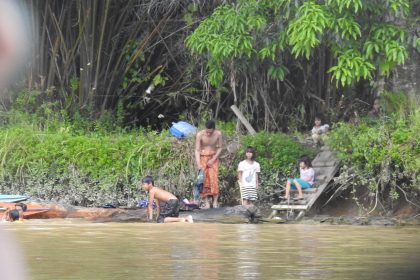
I had wondered if we’d have any chance during our stay of catching glimpse of a proboscis monkey. I soon found I had nothing to fear. Those we saw along the river that day were the first many. I had also hoped to see hornbills more clearly than last timeI was in Sabah. Again I wasn’t disappointed, even during out travel the lodge. I was startled when someone yelled ‘rhinoceros.’With only two rhinos left in all of Sabah thought surely not! And not was rhinoceros hornbill, but still exciting.
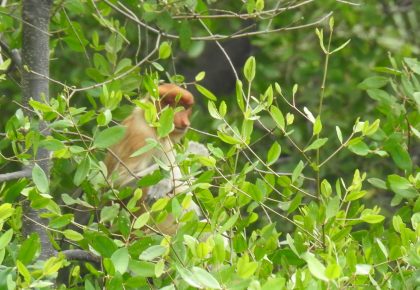
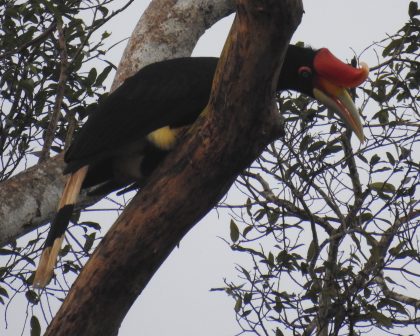
Sukau Rainforest Lodge
You certainly don’t have to rough it to experience this wonderful forest. The lodge is comfortable and highly attractive, the buffet meals delicious, the staff friendly and smiling, and the forest is right there beside your cabin, and in our case complete with a visiting orangutan and her baby feeding on fruits in a tall forest tree nearby. What a bonus!
One night we heard a few people singing Happy Birthday and thought it may be for Albert,who had almohad a birthday a few days previously, and had just arrived that afternoon. But no, it came closer and I was suddenly presented with a lovely, decorated chocolate cake with candles, knife and several plates to share it with my companions at our table,afte making a wish and blowing the candles..
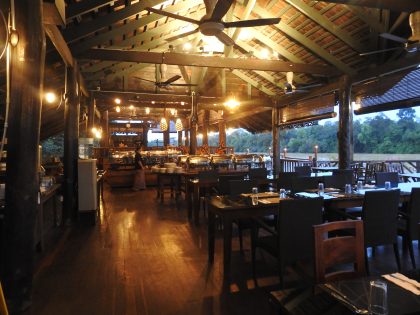
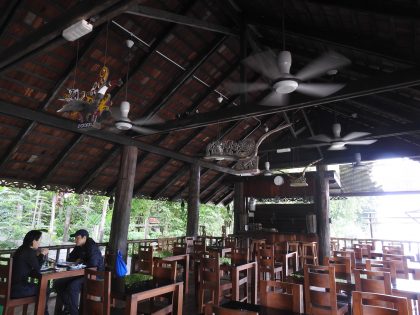
Our cabin was nestled amongst the trees, and had a natural skylight to cut down on power use during the day. Although some bottled water was available, we were provided with a large jug of drinking water in the cabin and encouraged to refill our own drinking bottles at the dining room.
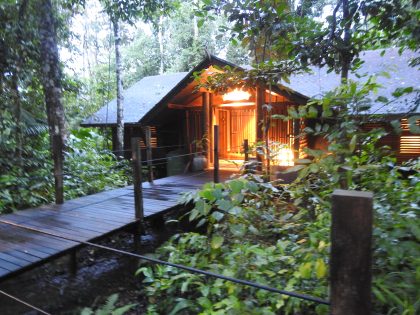
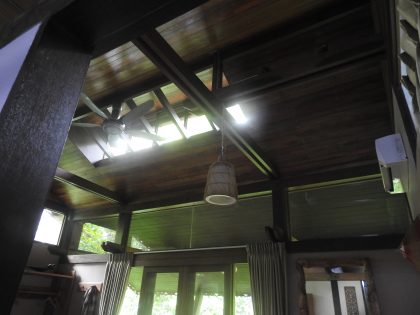
We attended a very interesting and well-presented talk on orang-utans – how to tell sex, age and dominance, other differences in appearance between individuals, etc,
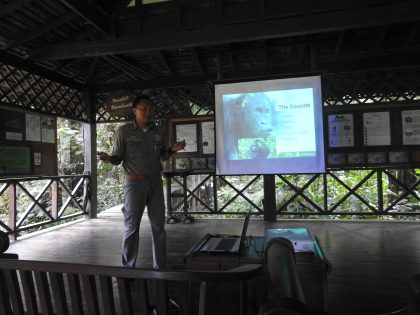
In addition to the orang-utans, there were flying squirrels, other squirrels and even flying “lemurs” close to the buildings as wells various birds, butterflies, dragonflies etc.
River trips
Up early each morning for a pre-breakfast river journey in quiet electric-powered boats, and again during they and early evening, we saw far more wildlife than I had dared hope for.
I was surprised to still see the Southern Cross at night. We were north of the equator, but of course not very far north.
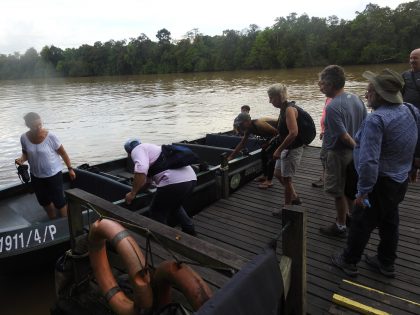

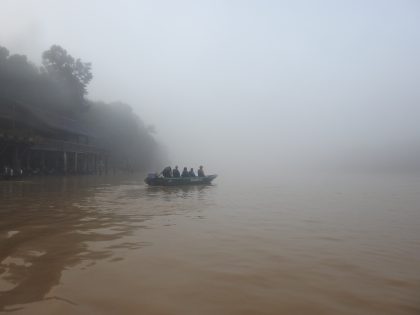
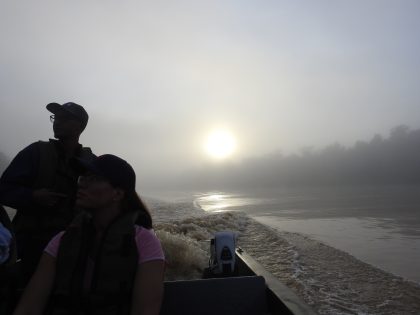
One animal I had heard of since childhood but never expected to see was the colugo or flying “lemur” (not really a lemur) but on our very first boat trip there was one clinging to a tree. These skilful gliders have a mammalian order all to themselves: taxonomists have not yet agreed whether there are two, three or four species, but all are in southeast Asia.
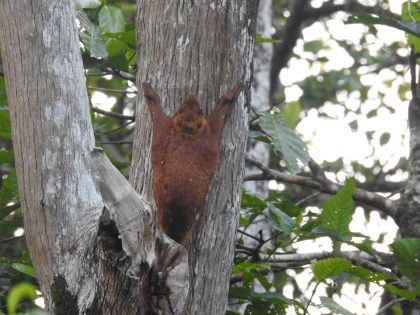
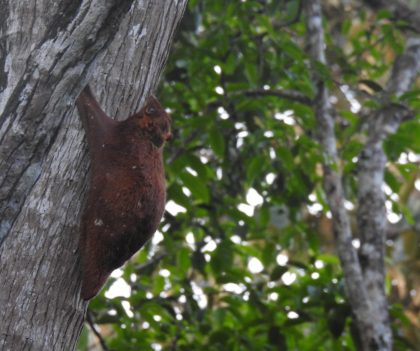
We saw plenty of proboscis monkeys (the males have the enormous noses that gives the common name to the species. These are unique to Borneo,and have partially webbed feet for walking on mud..
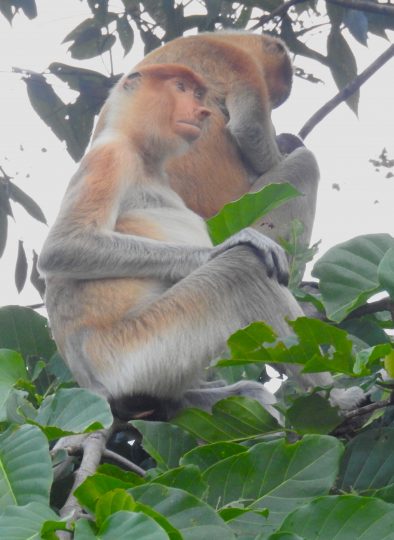
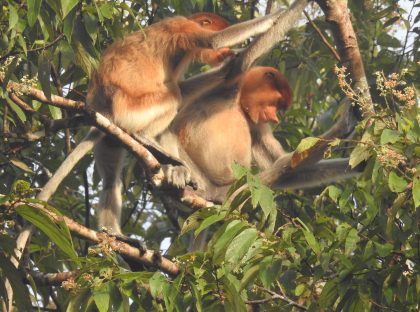
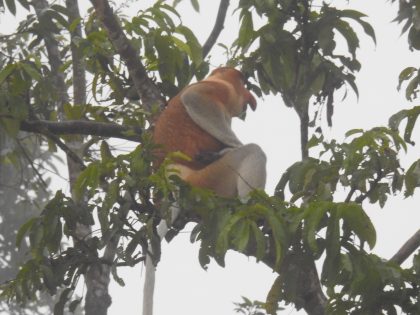
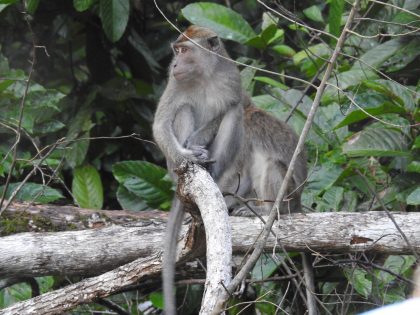
Long-tailed macaque
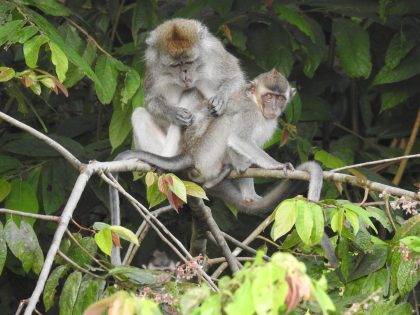
“Hey Mum, I’ve had about enough of this grooming session”
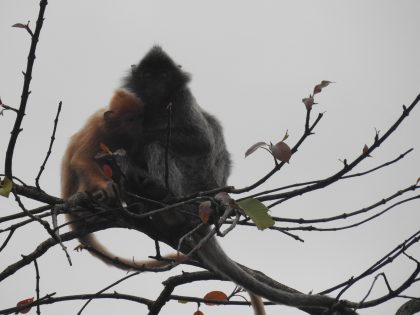
Silver langur and not-so-silver baby
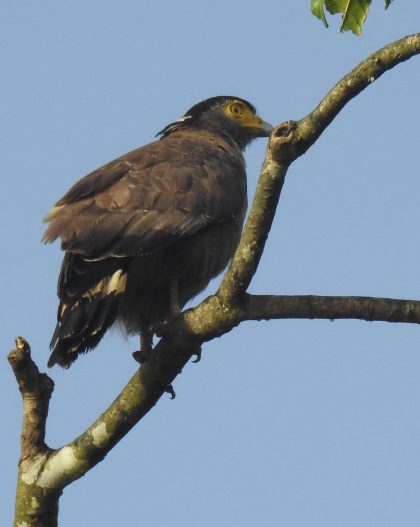
crested serpent-eagle
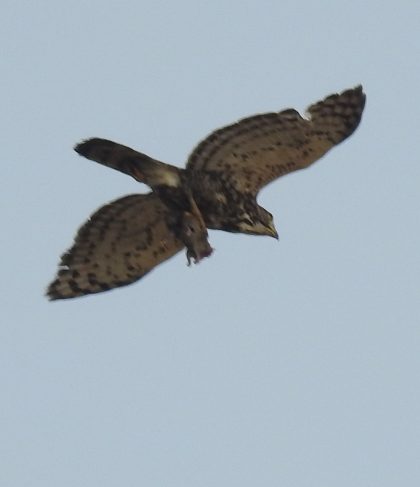
This one has just caught a rat
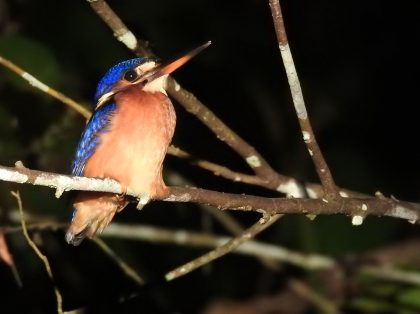
Blue-eared kingfisher, rather similar to the Australian azure kingfisher
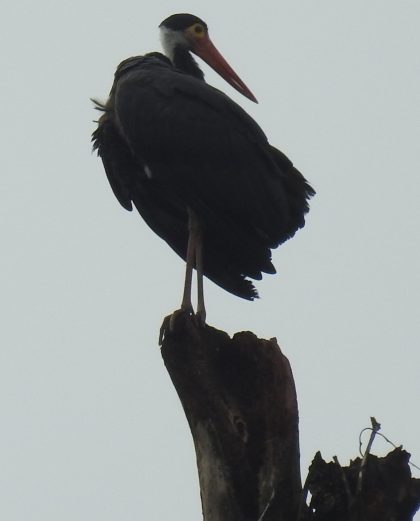
Storm’s Stork. Rare in most parts of Borneo nowadays but still holding its own in the Kinabatangan area
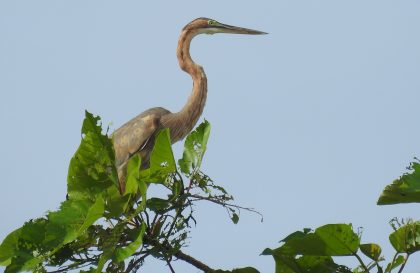
Purple heron
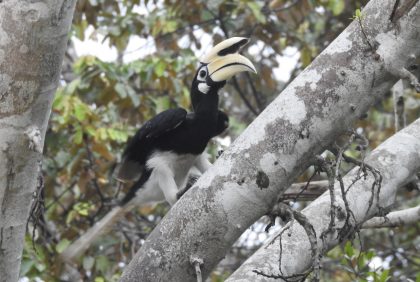
Oriental Pied Hornbill
Cliffs with swift nests:
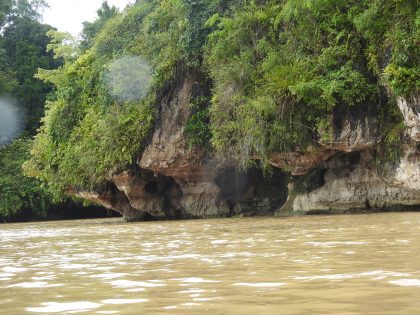
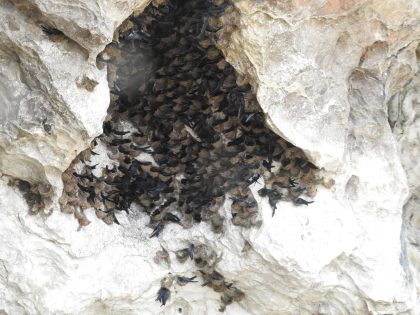
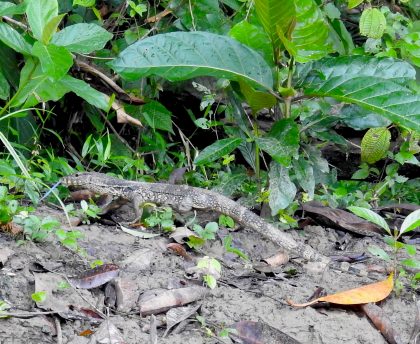
monitor lizard
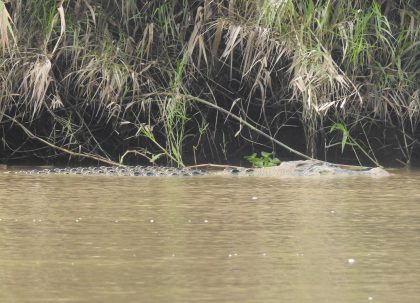
Saltwater crocodile: the same species that we have in northern Australia
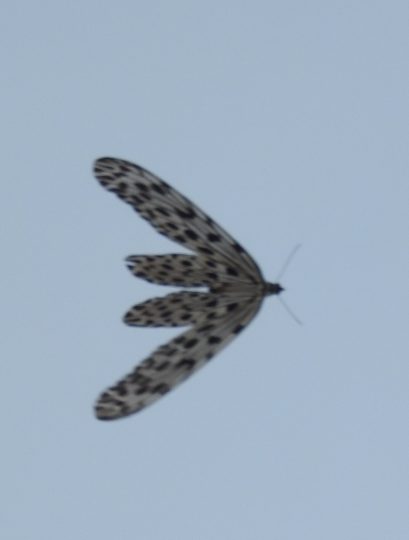
tree-nymph butterfly flying over river
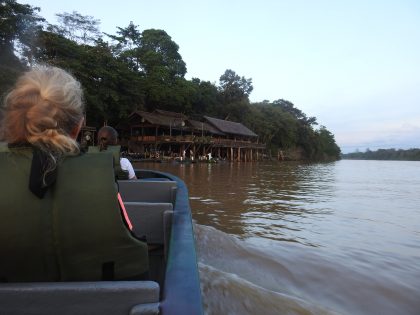
Returning to Sukau Rainforest Lodge
Gomantong Cave – Bats and more Orangutans
On our final afternoon we crossed the river and were taken by bus to Gomantong Cave. Edible swift nests are harvested here, under strict regulations.
I had heard that if there’s something fruiting in the forest nearby, orang-utans might visit. They sure did, and we had excellent views, first of a big male and then a female with her youngster, much of which I captured on video. When the male approached the female she tried to avoid him by heading to a nearby verandah but he followed. A little later they made Joy and her companion wait a little by sitting on the railings.
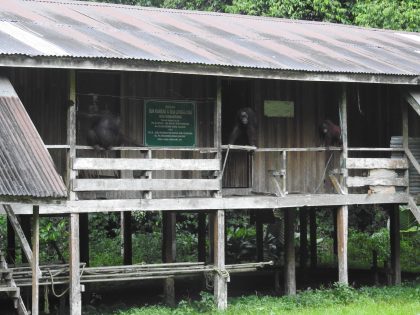
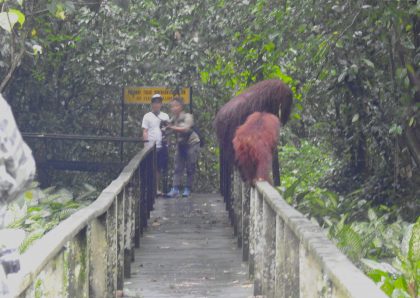
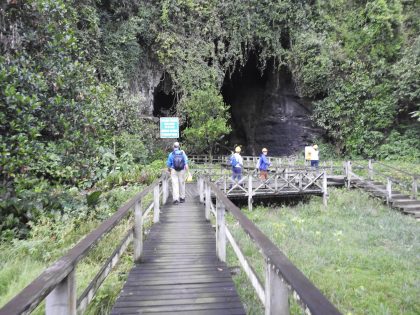
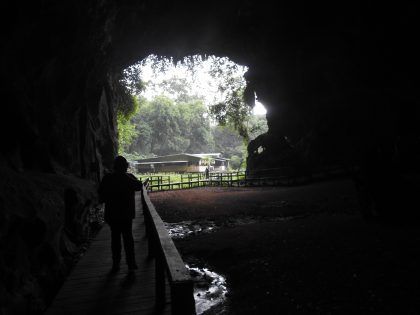
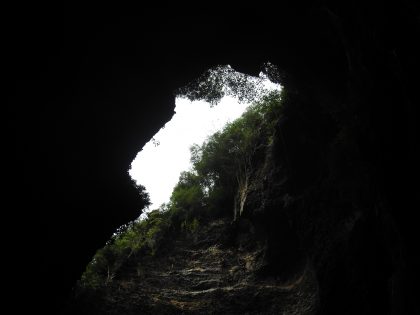
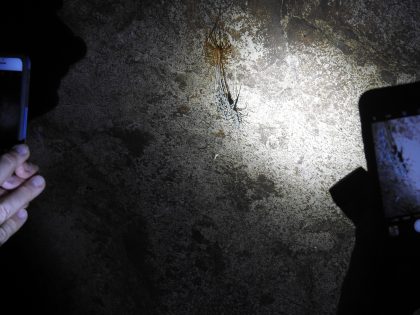
At dusk thousands of microbes started swirling out of the cave, sticking together in groups:there were a couple of hawks top Theresa well, swooping and feeding on them
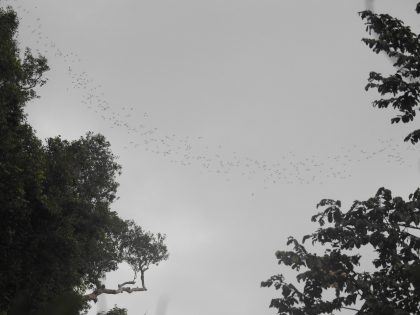
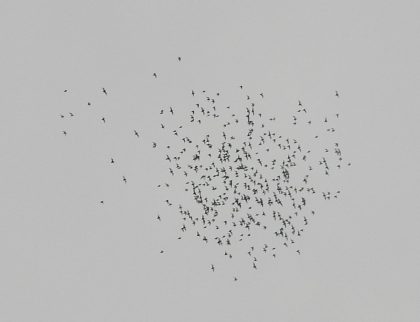
Are you beginning to see why I consider this a wonderful wildlife experience?
Other guests we shared the small wildlife-viewing boats with went on a couple of extra excursions and managed to see pigmy elephants, leopard cat and mouse deer. I’llhave to return some day to try for those!
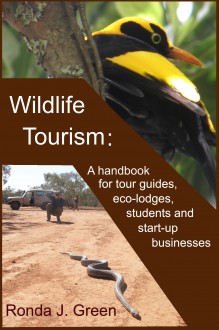
Wildlife Tourism handbook by Ronda Green
Guide training
I gave a presentation to the guides based on my book, going through various aspects of wildlife skills (finding and identifying wildlife, getting the “big picture” of the country’s fauna, minimal impact viewing, staying up to date on conservation issues etc.), people skills (interpretation methods, variety of wildlife tourists, keeping guests safe and happy, dealing with problems etc.), health and safety issues, bureaucracy another matters, and suggesting that learning is never-ending and thinking of novel ways to impart information can be a highly enjoyable creative activity, We had some discussions on these topics. I especially remember one guide saying that sometimes guests seemed to be difficult people to get along with but there was often an underlying reason – exhaustion coupled with jet lag, or depressive effects of malaria medications for instance. The guides were obviously very skilled and knowledgable already, but several told me they learnt a lot.
I also showed a presentation on the preparation of self-guided nature trails which I showed at our wildlife interpretation workshop last year, plus the presentation I was later to give in Sandakan.
Albert had planned on being present but was held up in his travels by some technicality, and arrived later that day, accompanied by a couple of Australian video-makers about to film a promotional documentary. They certainly saw a lot of wildlife the following day and also interviewed Albert, so I’m looking forward to seeing the result.
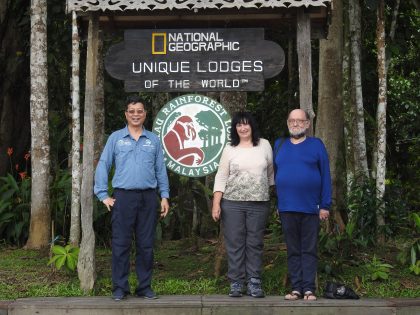

.
Back to Sandakan
It was hard to leave theLodge. We could easily have spent the next couple of months there.
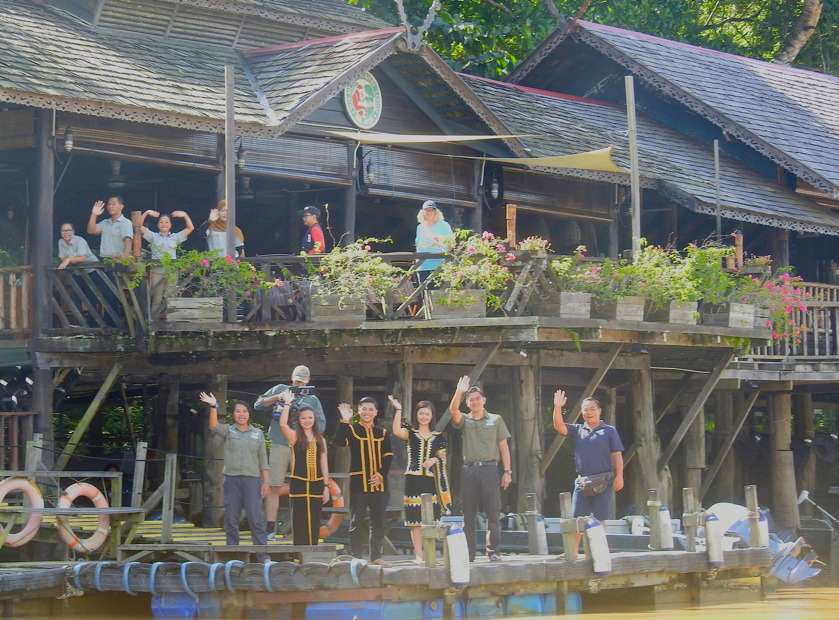
I hadn’t been interested in visiting a war memorial, but the Sandakan War Memorial is one Australians should know about.. There isa ceremony held there by the Malaysians every Anzac Day, but usually no Australians attend. It commemorates young soldiers who died in POW camps and on dreadful “death marches.”
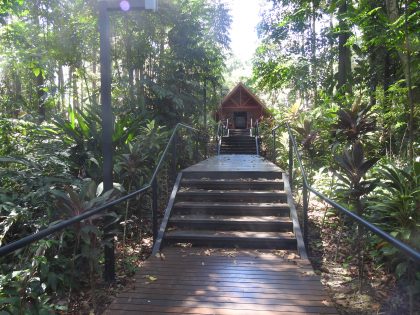
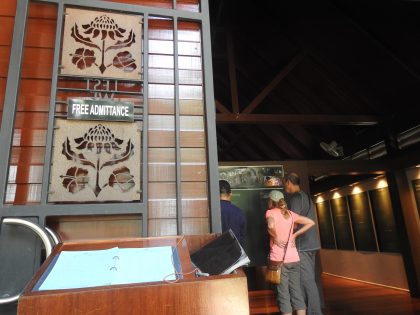
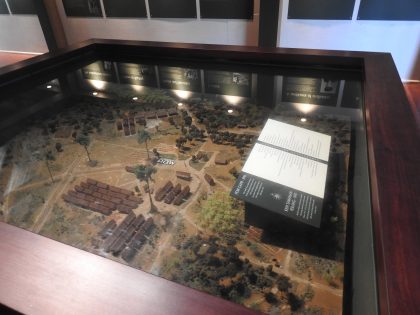
Our final stop was the Botanic Gardens, with an excellent information centre and canopy walk.
I ws impressed with the rules for birdwatching
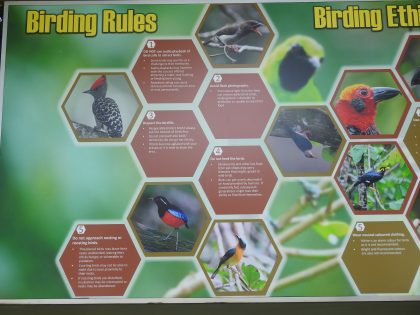
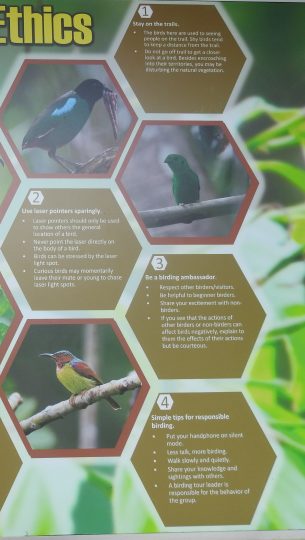
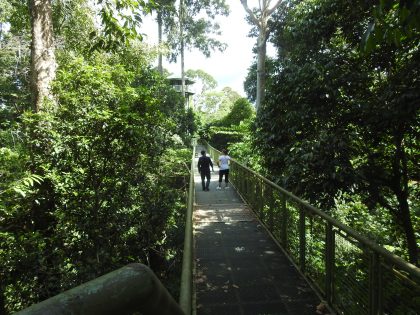


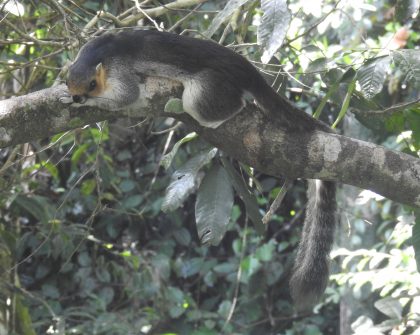
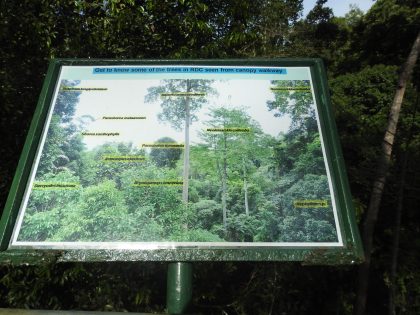
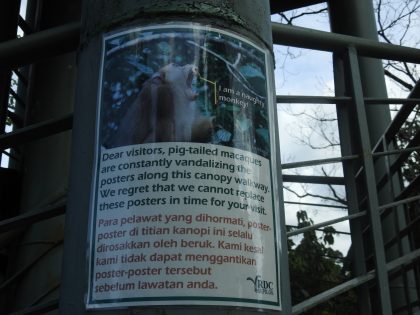
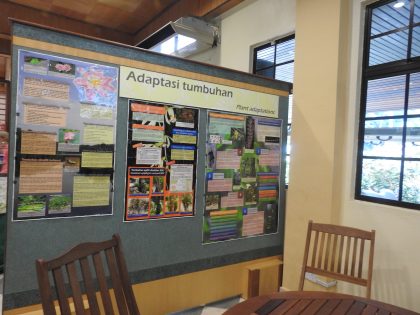
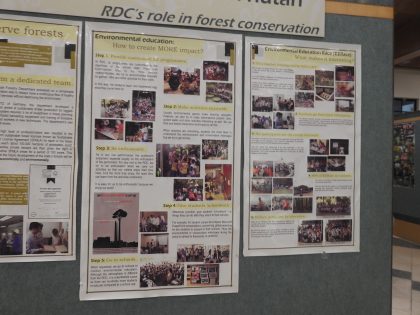
Presentation at the Sheraton
Albert had arranged for us to have a free night at the Sheraton Four Towers in Sandakan in exchange for presenting a talk on balancing the needs off wildlife, tourists, tour operators and local residents. This is the theme of the conference Wildlife Tourism Australia will hold in Tasmania in October this year.
The meeting was attended by people from the Sheraton, Sandakan Tourism Organisation, academics and local tour operators.
When asked for advice at the end,I said:
- I would like to encourage more interchange between Sabah and Australia for wildlife tourism. We both have a wonderful diversity to wildlife, and we are so close to one another, yet our wildlife is so very different.
- Some Australians may feel a little nervous about stepping into the unknown, but if they could know how well they will be taken care of from the moment they arrive to the moment they leave they should feel a lot easier. [Even without guides on our final morning (before we were picked up for a final lunch with Albert and taken to the airport) I felt safer walking around the streets of Sandakan than I would on the streets of Los Angeles or various other cities. I wouldn’t walk alone at night, but that’s something I generally don’t do in cities anywhere except in well-lit areas with plenty of others around]
- So much forest has already been felled for forestry, palm oil and other industries. I would like to see the existing palm oil plantations (which are very extensive in Sabah) managed sustainably so that the same land can continue to be used with no further forests felled to make way for new plantations. I would also like to see habitat corridors established through the existing plantations so that wildlife can freely move between habitat remnants.
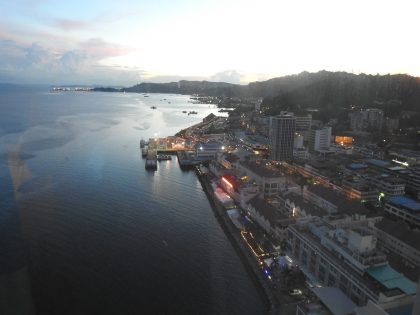
View of Sandakan from the Sheraton
Many thanks to Albert and his team, and I certainly hope to be back some day!
